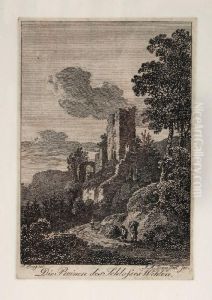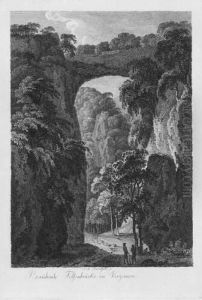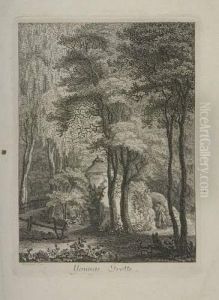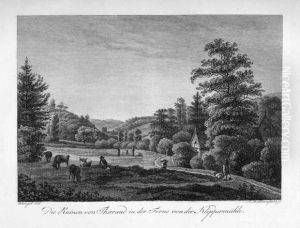Johann Adolph Darnsteds Paintings
Johann Adolph Darnstedt, often less known in the mainstream art historical narrative, was a German artist whose contributions to the art world, particularly within the realms of engraving and painting, hold a niche yet significant place in the 18th and early 19th centuries. Born in 1747, Darnstedt's early life and artistic training, like many artists of his period, are not extensively documented, which has led to a somewhat enigmatic legacy. What is known, however, speaks to a career that was both prolific and influential in certain circles, especially in the context of German art history. Darnstedt's work predominantly reflects the artistic sensibilities of his time, showcasing a blend of the late Baroque and early Neoclassicism, with an emphasis on detail, composition, and the emerging inklings of Romanticism towards the latter part of his career.
During his lifetime, Johann Adolph Darnstedt was primarily celebrated for his skill as an engraver. He had a keen eye for detail and an adept hand that allowed him to produce engravings that were not only technically proficient but also deeply expressive. These engravings often featured scenes from mythology, history, and literature, reflecting the era's interest in classical antiquity and the human experience. His work in this medium contributed to the dissemination of neoclassical aesthetics throughout Germany and helped to establish engraving as a respected art form in its own right.
Aside from his engravings, Darnstedt also engaged in painting, though his works in this medium are less well-documented and fewer have survived. Those that do showcase a similar thematic interest in classical and historical subjects, rendered with a sensitivity to light, shadow, and emotion that hints at the early stirrings of Romanticism. Darnstedt's paintings, while perhaps not as revolutionary as those of his contemporaries in other parts of Europe, nonetheless offer valuable insights into the evolving artistic trends of late 18th-century Germany.
Johann Adolph Darnstedt's contributions to art were not limited to his own creations. He was also involved in the artistic community of his time, engaging with other artists and contributing to the intellectual and cultural discussions surrounding art and its role in society. Though the specifics of his interactions and influence remain somewhat obscure, it is clear that he was a part of the broader network of artists and thinkers who were shaping the future of European art.
Darnstedt's death in 1810 marked the end of an era and the career of an artist who, while not as widely recognized as some of his contemporaries, played a significant role in the development of art in Germany. His legacy, preserved through his engravings and the scant surviving paintings, continues to offer a window into the artistic transitions of his time, bridging the gap between the classical and the romantic, the precise and the expressive. Johann Adolph Darnstedt remains a figure of interest for those who seek to understand the nuanced and often overlooked pathways of art history.



